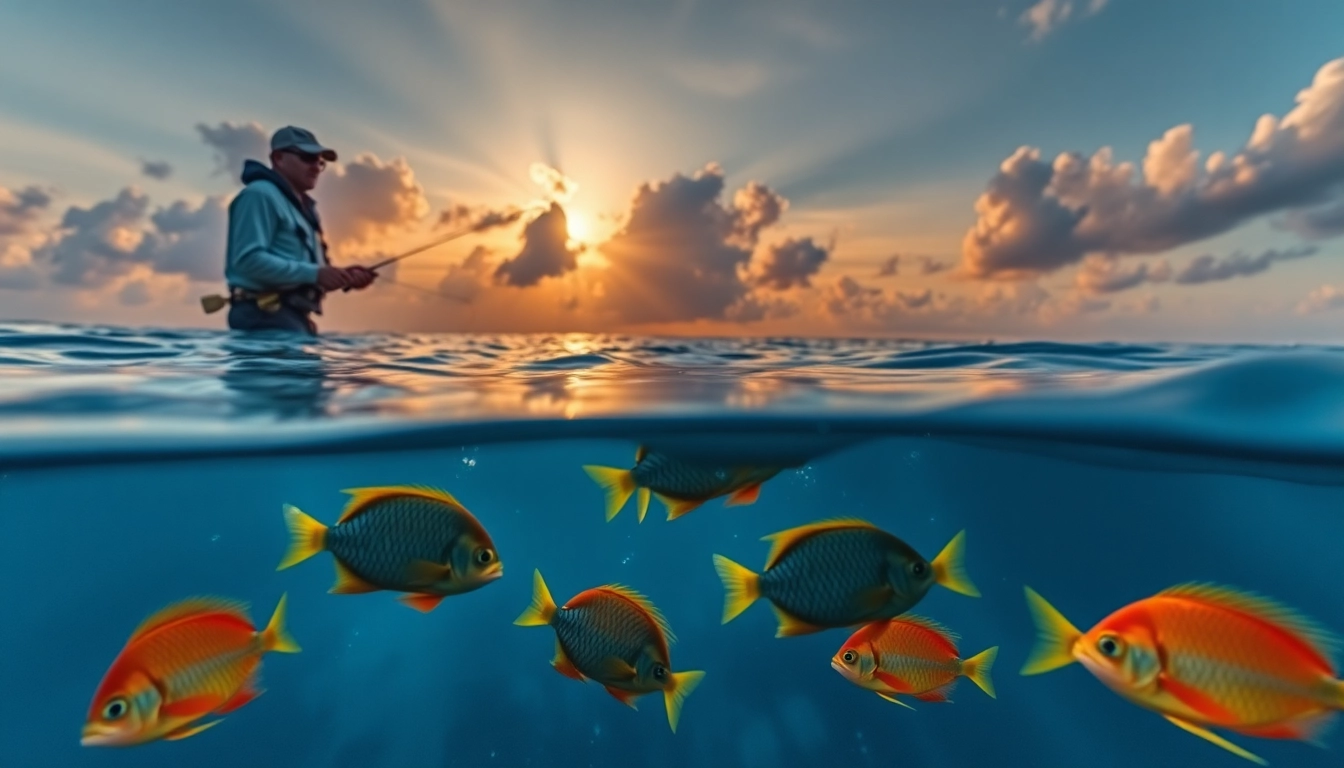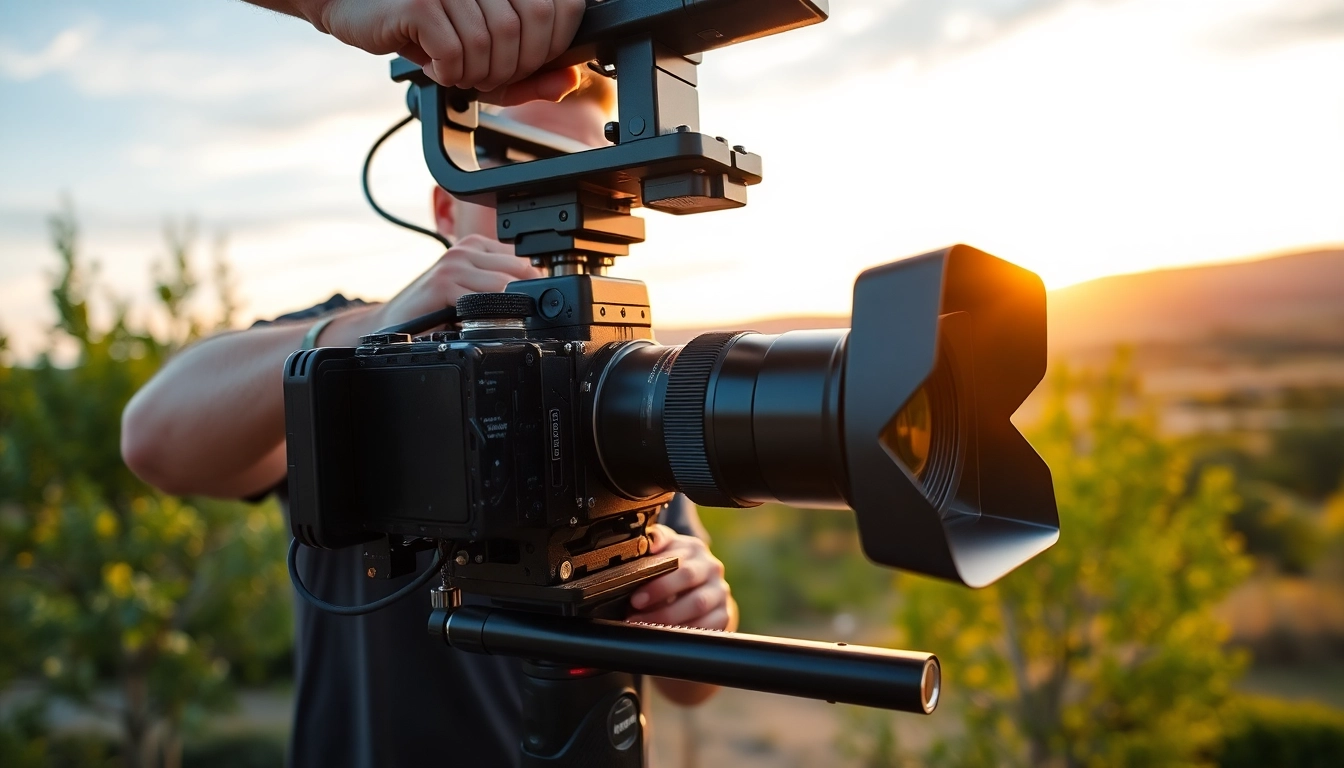Understanding Saltwater Fly Fishing Basics
What is Saltwater Fly Fishing?
Saltwater fly fishing is a specialized form of fly fishing that targets saltwater species using lightweight artificial flies. Unlike traditional angling techniques that rely on heavier tackle, saltwater fly fishing emphasizes finesse, precision, and skillful casting to entice a variety of challenging gamefish. Species commonly pursued include tarpon, bonefish, permit, snook, and redfish, each offering unique challenges and rewards. Engaging in Saltwater fly fishing not only exposes anglers to exciting fishing opportunities but also provides the chance to explore beautiful coastal environments.
Common Gear and Equipment for Saltwater Fly Fishing
Equipping oneself for saltwater fly fishing involves understanding the necessary gear that will enhance your chances of success. The right setup typically includes:
- Fly Rods: These usually range from 8 to 12 weight, with 9 weight being the most versatile for various saltwater species.
- Fly Reels: A durable, corrosion-resistant reel that can hold sufficient backing line is essential due to the potential for long runs by powerful fish.
- Fly Lines: Floating lines are standard, although intermediate and sinking lines are also used depending on the fishing conditions and target species.
- Leaders and Tippets: Fluorocarbon material is often preferred for its low visibility and abrasion resistance against sharp teeth and rough structures.
- Flies: Patterns like Clouser minnows, deceivers, and crab patterns are popular for enticing saltwater species.
- Clothing and Accessories: Lightweight, quick-drying apparel, polarized sunglasses, and sun protection gear are vital for comfort and protection from the elements.
Your First Steps in Saltwater Fly Fishing
As a novice, the initial steps in saltwater fly fishing can be both exciting and daunting. Here are key considerations to ease your journey:
- Educate Yourself: Start by familiarizing yourself with local species, techniques, and conditions that influence fishing success.
- Get the Right Gear: Invest in quality gear that suits your fishing style, while keeping in mind the saltwater environment.
- Practicing Casting: Casting accuracy is fundamental. Practice your techniques on land before heading out to the water.
- Find a Mentor: Connecting with experienced anglers can provide invaluable insights, tips, and encouragement.
Choosing the Right Strategies for Saltwater Fly Fishing
Effective Casting Techniques for Saltwater Fly Fishing
Effective casting in saltwater scenarios necessitates a strong foundation in various casting techniques, as conditions often demand precision and adaptability:
- Double Haul: This technique enhances line speed and distance, essential for covering vast areas in saltwater.
- Roll Cast: Useful for tight spaces or when backcasting is limited due to obstructions.
- Laydown Cast: Allows the fly to land softly on the water’s surface, minimizing spooking fish.
Understanding Tides and Their Impact on Saltwater Fly Fishing
Tides play a crucial role in saltwater fishing dynamics; understanding their cycle can significantly impact your success:
Fish behavior and feeding patterns are closely tied to tidal movements. During rising tides, baitfish and crustaceans are pushed towards shore, attracting gamefish. Conversely, falling tides may prompt fish to retreat to deeper waters. Recognizing peak feeding times, which often coincide with high tide levels, can lead to more productive fishing sessions.
Popular Saltwater Fly Patterns and Where to Use Them
Having a diverse array of fly patterns is essential for adapting to various fishing scenarios. Some popular patterns include:
- Clouser Minnow: Mimics baitfish and is effective across a range of species.
- Crab Patterns: Best used around rocky bottoms and flats where crabs are prevalent.
- Deceiver: Versatile for numerous saltwater species and especially effective on larger predators.
Choosing the right fly often depends on the species targeted, time of day, and environmental conditions.
Location Insights for Successful Saltwater Fly Fishing
Best Spots for Saltwater Fly Fishing in the US
The United States boasts a plethora of prime saltwater fly fishing locations that cater to various species:
- Florida Keys: Renowned for its diverse species, especially bonefish and tarpon.
- Outer Banks, North Carolina: Ideal for catching redfish, stripers, and false albacore.
- San Diego Bay, California: Excellent for targetingfishing for leopard sharks and bass.
- Texas Gulf Coast: Known for robust populations of redfish and speckled trout.
- Alaska: A premier location for larger species like halibut and various salmon types.
Seasonal Considerations for Different Species
Understanding seasonal patterns is key to successful saltwater fly fishing. Different species exhibit varying migratory behaviors:
For example, tarpon typically migrate north along the Gulf Coast in spring and return south by autumn, while bonefish are often found near the flats year-round, with peak activity during warmer months. Monitoring local fishing reports can provide insights into current conditions and species availability.
Tips for Finding Your Ideal Saltwater Fishing Location
Finding the right spot involves a combination of research, exploration, and local knowledge. Here are helpful approaches:
- Consult Local Guides: Local fishing guides possess invaluable insights on species behavior and the best hotspots.
- Utilize Online Resources: Explore fishing forums, social media groups, and local regulations to gather up-to-date information.
- Utilize Technology: GPS and fishing apps can assist in identifying productive locations and tracking your catches.
Enhancing Your Skills in Saltwater Fly Fishing
Practicing Your Technique: Drills for Improvement
Regular practice is essential for honing your casting and fishing techniques in saltwater environments. Here are some effective drills:
- Target Practice: Set up targets at varying distances to refine accuracy and distance casting.
- False Casting Drills: Practice false casting to develop control over line speed and rhythm.
- Sketching the Cast: Visualize the path of your cast and strive for a smooth, efficient motion while physically practicing.
Advanced Tactics for Skilled Saltwater Fly Fishing Anglers
For experienced anglers looking to elevate their saltwater fly fishing, consider some of these advanced tactics:
- Sight Fishing: Developing the ability to spot fish before casting can enhance success rates significantly.
- Strategic Fly Selection: Adapt your fly selection based on the time of day, tide, and environmental conditions to better mimic prey.
- Use of Stealth: Approaching fish quietly and minimizing movement can prevent spooking them.
Common Mistakes to Avoid in Saltwater Fly Fishing
Even seasoned anglers can fall prey to common pitfalls. Some mistakes to sidestep include:
- Neglecting to Match Gear with Target Species: Using inappropriate setups can lead to frustration and failure in catching desired fish.
- Overlooking Tidal Patterns: Ignoring the influence of tides can result in missed opportunities.
- Being Inflexible with Techniques: Failing to adapt casting styles or fly patterns based on current conditions can hinder success rates.
Community and Resources for Saltwater Fly Fishing Enthusiasts
Joining Local Saltwater Fly Fishing Groups
Engaging with local saltwater fly fishing communities can provide networking opportunities, mentorship, and access to shared experiences. Many towns with strong fishing cultures have clubs or organizations that host gatherings, events, and instructional clinics. Becoming part of these groups can help you gain technical knowledge and discover hidden fishing gems.
Online Forums and Resources for Saltwater Fly Fishing
Online platforms present an invaluable resource for anglers. Participating in online forums dedicated to saltwater fly fishing allows you to exchange tips, experiences, and information with fellow enthusiasts across the globe. Sites like fishing-focused blogs, social media groups, and local/regional forums can provide insights into current fishing conditions and techniques.
Books and Guides on Saltwater Fly Fishing
Numerous books and guides exist that delve into both the basics and advanced strategies of saltwater fly fishing. Investing time in self-education by reading high-quality literature can deepen your understanding of species behavior, gear selection, and fishing techniques. Seek out work by recognized authors and anglers in the community to ensure that you are learning from experts with well-founded knowledge.



